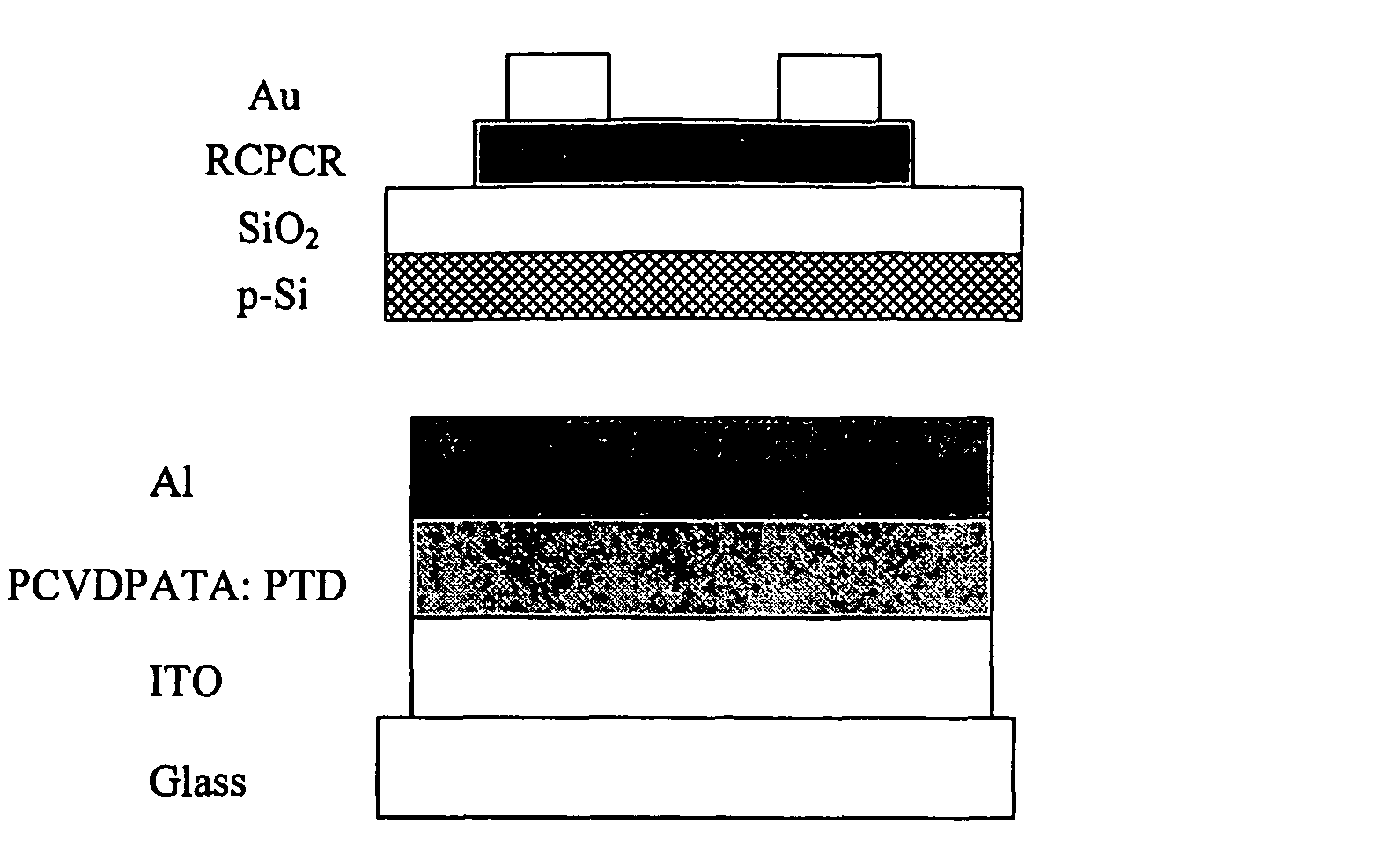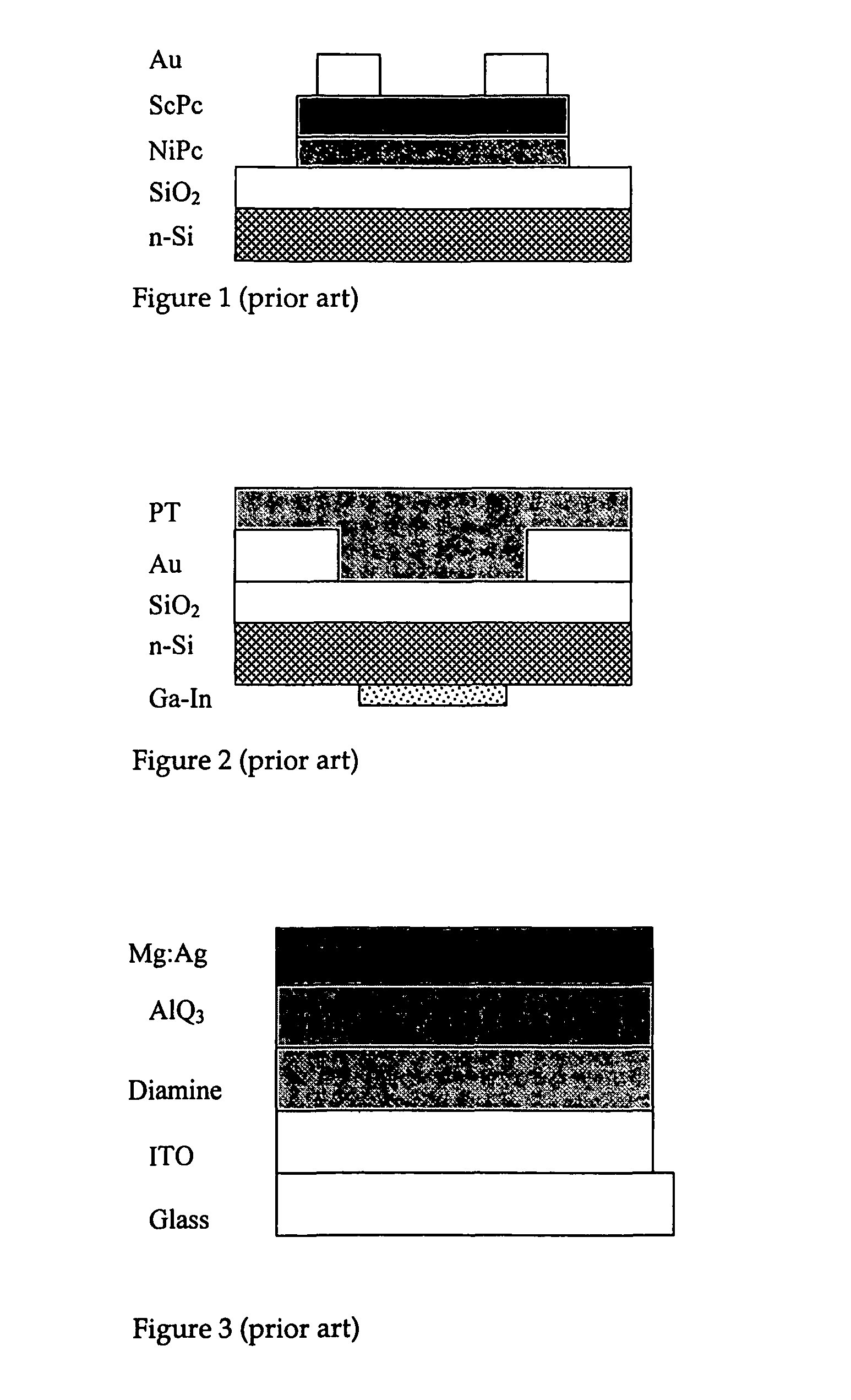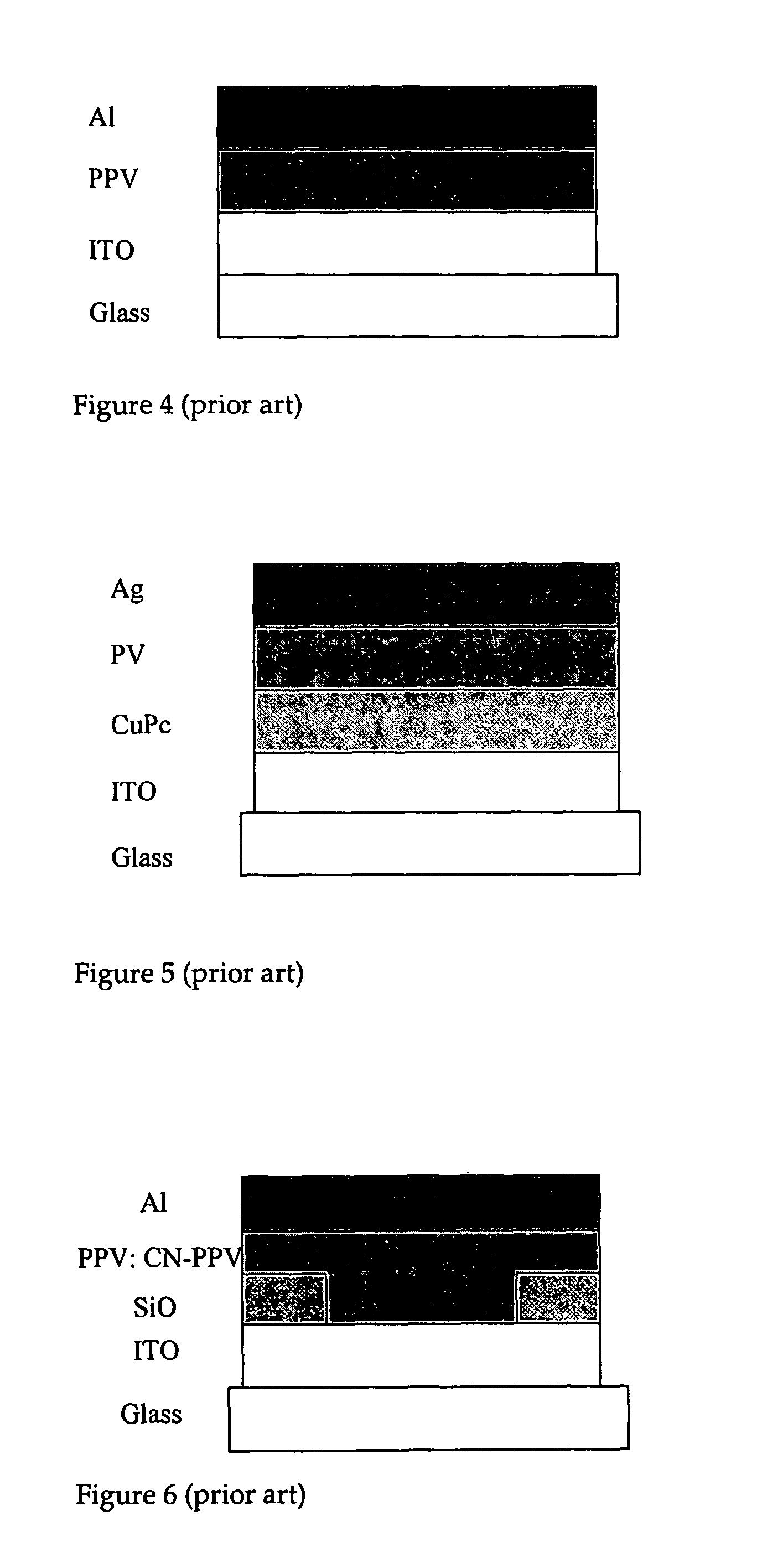2,7-carbazolenevinylene derivatives as novel materials in producing organic based electronic devices
a technology of carbazolene and derivatives, applied in the field of organic based semiconductor devices, can solve the problems of difficult processing, easy oxidation in air, and use of plastic substrates
- Summary
- Abstract
- Description
- Claims
- Application Information
AI Technical Summary
Benefits of technology
Problems solved by technology
Method used
Image
Examples
first example
[0061]In a first embodiment of the present invention as shown in FIG. 7, an OFET was fabricated in the top contact geometry consisting of; a p-type silicon wafer covered with a thermally grown SiO2 film used as a substrate, a thin RCPCR semi-conductor layer, a source and drain gold electrode on top of the organic semi-conductor layer, and a gate electrode on the back side of the substrate. Prior to use, each substrate (15×15 mm2) is cleaned sequentially with acetone, ultrasonicated isopropanol at 80° C., and UV / ozone cleaner for 10 min. In order, the organic semi-conductor RCPCR and gold are deposited by thermal evaporation at a pressure of 1×10−7 torr at a substrate temperature of 25° C. for RCPCR and 25° C. for gold. The gold source and drain electrodes are deposited on top of the organic semi-conductor through a shadow mask forming a top contact geometry with a channel length of 40 μm and a channel width of 1 μm. An electrical wired bonded on the backside of the p-doped silicon w...
second example
[0063]In a second embodiment of the present invention as shown in FIG. 9, an OFET was fabricated in the top contact geometry consisting of; a p-type silicon wafer covered with a thermally grown SiO2 film used as a substrate, a thin CPC semi-conductor layer, a source and drain gold electrode on top of the organic semi-conductor layer, and a gate electrode on the back side of the substrate. Prior to use, each substrate (15×15 mm2) is cleaned sequentially with acetone, ultrasonicated isopropanol at 80° C., and UV / ozone cleaner for 10 min. Then, the substrate was treated sequentially in a NH4OH / H2O2 / H2O (2:2:100) solution for 15 min, H2O for 1 min, HCl / H2O2 / H2O (2:2:100) solution for 15 min, H2O for 1 min, dried with N2 and put in the UV / ozone cleaner for 1 h. Then, the surface of the substrate was treated with hexamethyldisilazane (HMDS) on a vapor prime system at 150° C. and 30 mmHg for 2 h prior to evaporation. In order, the organic semi-conductor CPC and gold are deposited by therma...
third example
[0065]In a third embodiment of the invention as shown in FIG. 12, an OLED was fabricated consisting of; an Indium Tin Oxide transparent conductive anode on a glass substrate, a thin PCVDPAP layer as emitter, and a Ca cathode. The Indium Tin Oxide coated glass (5×5 cm2) with a sheet resistance of 15 ohm / sq is patterned using photolithography techniques to produce ten segments each with an active area of 5×6 mm2. Prior to use, the substrates are cleaned sequentially with detergent, deionized water, acetone, ultrasonicated isopropanol at 60° C., and UV / ozone cleaner for 10 min. The polymeric PCVDPAP material is solubilized in chloroform, filtered through a 0,2 μm PTFE filter, spin-coated at 2000 rpm for 60 s onto the Indium Tin Oxide substrate, and dried at 40° C. for 10 min. The Ca layer is thermally evaporated at a pressure of 1×10−7 ton and at room temperature.
[0066]The OLED produced the electroluminescence spectrum shown in FIG. 13. The resulting diode emitted orange-red light with...
PUM
| Property | Measurement | Unit |
|---|---|---|
| temperature | aaaaa | aaaaa |
| pressure | aaaaa | aaaaa |
| temperature | aaaaa | aaaaa |
Abstract
Description
Claims
Application Information
 Login to View More
Login to View More - R&D
- Intellectual Property
- Life Sciences
- Materials
- Tech Scout
- Unparalleled Data Quality
- Higher Quality Content
- 60% Fewer Hallucinations
Browse by: Latest US Patents, China's latest patents, Technical Efficacy Thesaurus, Application Domain, Technology Topic, Popular Technical Reports.
© 2025 PatSnap. All rights reserved.Legal|Privacy policy|Modern Slavery Act Transparency Statement|Sitemap|About US| Contact US: help@patsnap.com



